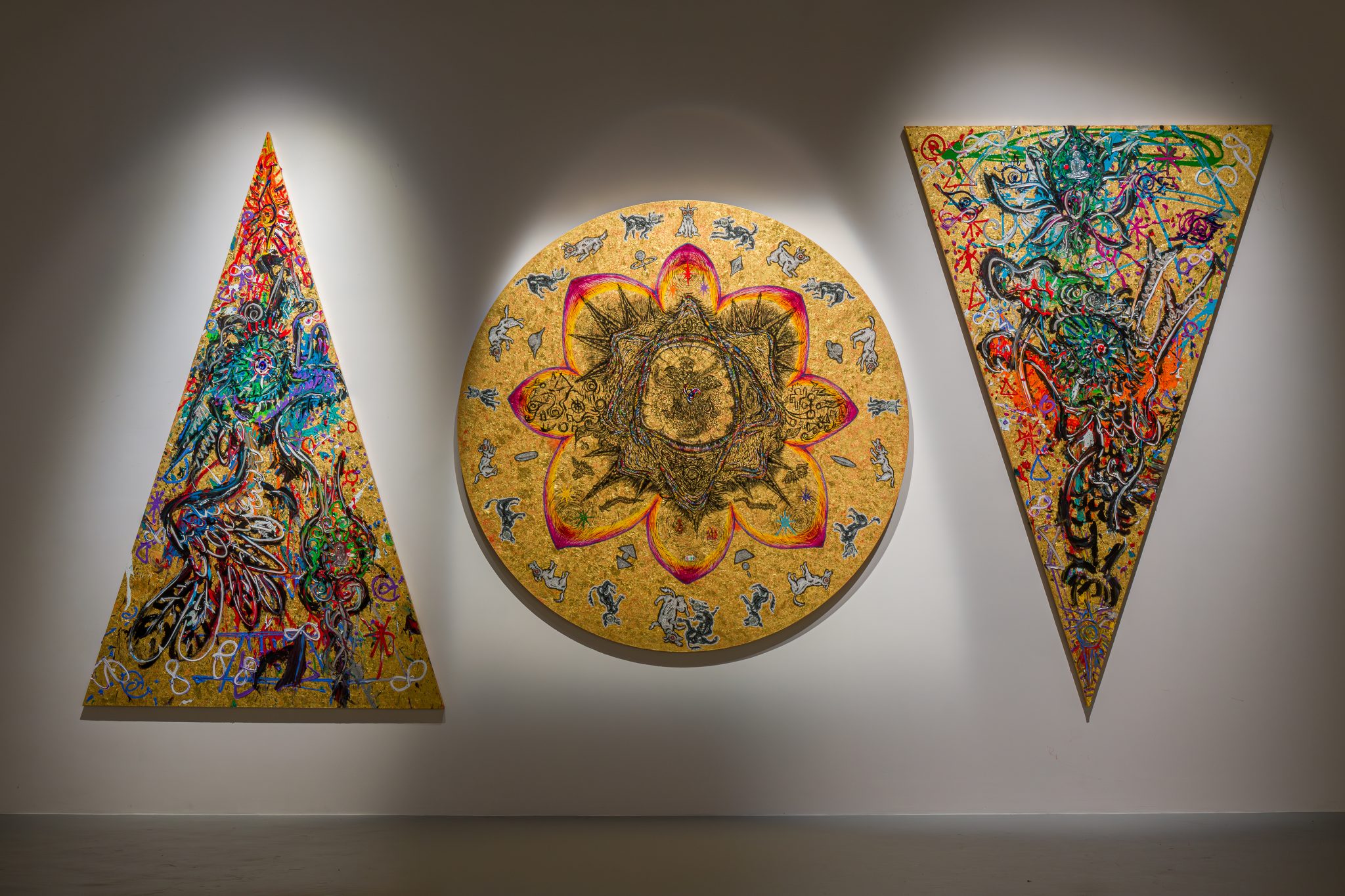As Whitestone Gallery opens their new Singapore space, ArtReview spoke to the Japanese artist about prayer, the city and the human body
ArtReview Can you describe your studio setting? What’s a typical day like when you’re working in your studio? How important is the environment for your creative process?
Miwa Komatsu Recently, I relocated my studio from Tokyo to Nagano Prefecture. The divine spirits I draw hold a profound connection with mountains and nature, making this move back to a more natural environment especially significant. Now I have a dedicated meditation room where I engage in daily prayer. This sacred space allows me to paint in a state of deep spiritual immersion. My routine typically commences with meditation, followed by the creation of these divine spirits every day.
AR Can you describe your typical creative process, from initial idea or inspiration to completion?
MK I prefer not to begin my creative process with a predefined concept or sketch. Instead, I adopt a technique of tracing lines, focusing intensely on a singular point on the canvas. This approach allows me to generate art without a predetermined subject. Ideas and inspirations emerge as I engage with the object I’m painting, or as I weave together the world revealed through my daily meditation practice.
AR How significant is the live-painting process in the creation of your artwork?
MK I view live painting not as a mere performance, but as a means of connecting with intangible elements, particularly the energy inherent in the human body.
I hold the belief that energy courses through individuals. During the live painting process, I absorb fragments of people’s energy, hopes and other sentiments, all while harmonising them with the energy of the land. I also offer prayers for the land’s soul and the repose of the people’s spirits. Although the production process is swift, every moment holds profound significance.
I have visited Singapore approximately four times, and I know Singapore is a modern city-state, but there was a time when it was a jungle. The power of that era and the land’s energy linger and through my art I strive to fuse these elements. It’s imperative for humanity to coexist harmoniously with the natural world. We cannot oppose nature; rather, it is vital to live in sync with it.
In this regard, Singapore’s commitment to environmental preservation is evident. I channel the energy I sensed from Singapore, a site that places immense value on the interplay between people and nature, into the form and hues of the divine spirits. Through this, I convey my prayer for a profound harmony between humanity and the natural world.

AR Are there any artists, historical or contemporary, who have had a significant influence on your work or served as sources of inspiration for you?
MK In this exhibition, you’ll find my ongoing project called Area 21, which I’ve been devoted to since 2017. From this project, I crafted a Dymaxion map. Stuart Brandt, who founded the Whole Earth Catalog, is also associated with the inception of the hippie culture. His endeavours were closely tied to his philosophical outlook, emphasising the finite nature of Earth’s resources.
AR Finally, is there a particular message or feeling you hope viewers take away from experiencing your art?
MK I aspire for viewers to perceive the spiritual essence within my work, even though it’s shown in physical form. When I paint, I hope it touches them deeply, helping them connect with the divine essence. I truly believe art is like medicine for the soul, and I want to share that comfort with as many people as I can.
MIWA KOMATSU: Sense of Sacredness will be on view at Whitestone Gallery, Singapore from 14 October to 17 December
RONALD VENTURA: An Introspective opens at the New Art Museum Singapore on 14 October through 28 January

About Whitestone Gallery
Founded in the heart of Tokyo in 1967, Whitestone Gallery has been a pioneer gallery in the Japanese art scene. For the purpose of creating more dialogues between art and region, Whitestone opened the Karuizawa New Art Museum in Karuizawa (2012) as a rare example of a private museum in Japan. Whitestone Gallery is an international contemporary art gallery with locations in various cities, including Tokyo, Hong Kong, Taipei, Beijing, Seoul and Singapore.
The grand opening of Whitestone Gallery Singapore will feature a solo exhibition by Japanese artist Miwa Komatsu. Admired for her powerful expressiveness, Komatsu’s works often revolve around the theme of mythical beasts. This solo exhibition will mark Komatsu’s largest gallery exhibition to date, showcasing a collection of her new works. Moreover, visitors will have a once-in-a lifetime experience to witness Komatsu’s on-site live painting session on the grand opening day.
Simultaneously, the New Art Museum will debut with a solo exhibition by Filipino artist Ronald Ventura. As the first Southeast Asian artist to be represented by Whitestone Gallery, Ventura’s paintings and sculptures are known for their rich metaphors and distinctive style within Southeast Asian contemporary art. Alongside the exhibition, the museum will also release limited edition prints made by the artist and the museum.
The Grand Opening Ceremony (open to the public) will be held on 14 October at 2:00 p.m.
Location: 39 Keppel Road, #05-03/06 Tanjong Pagar Distripark, Singapore 089065
